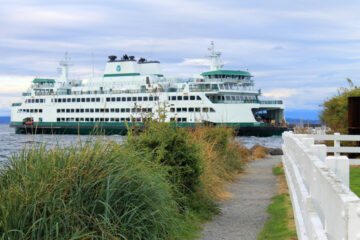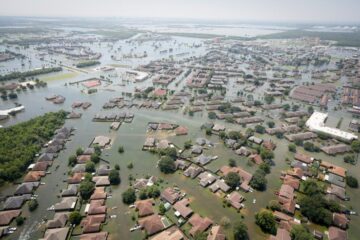Known as the “Land of 10,000 Lakes,” Minnesota’s landscapes are defined by its countless bodies of water, lush forests, and vast prairies. With its strong job and friendly communities, Minnesota provides a rich and multifaceted living experience. However, there are challenges that come with living in this area. In this Redfin article, we will embark on a journey to explore the intricacies of life in this state, shedding light on the myriad pros and cons of living in Minnesota. Whether you’re searching for homes in Rochester, apartments in Minneapolis, or want to learn more about this state, read on to get started.
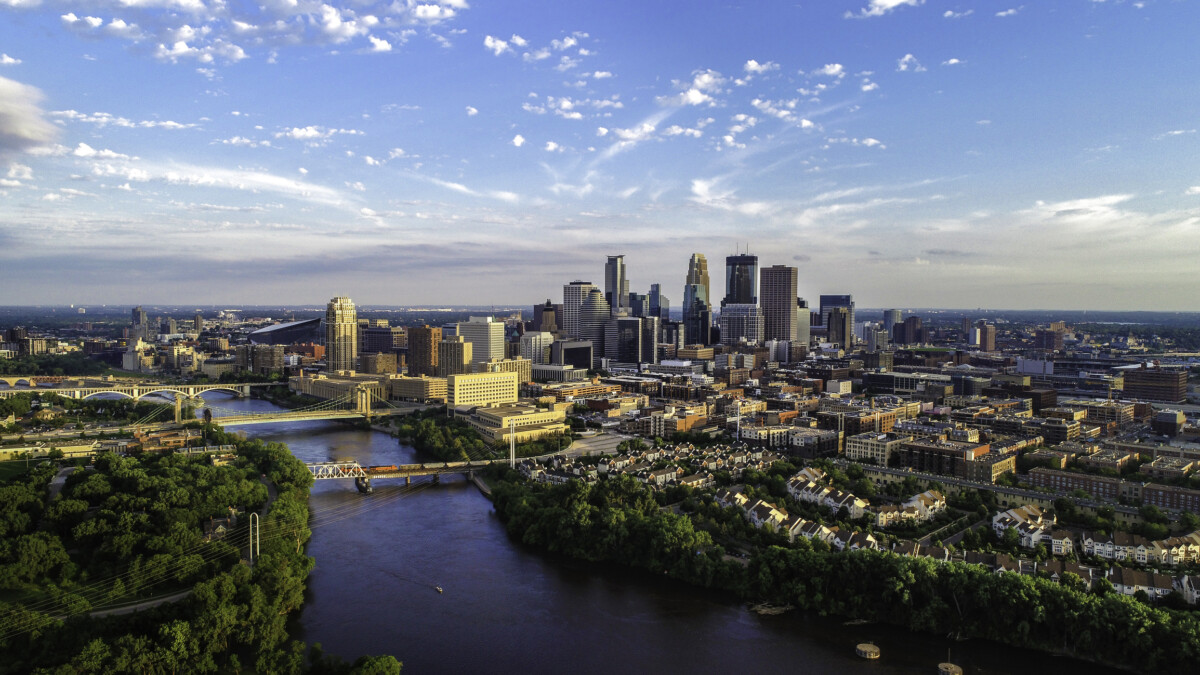
Pros of living in Minnesota
1. Affordable cost of living
The Minnesota housing market presents an attractive option for prospective homeowners and renters alike. While Minneapolis, one of the state’s largest cities, boasts a median sale price of $338,300, significantly lower than the national median of $411,868, it offers a compelling opportunity for those seeking affordable living. St. Paul, its neighboring twin city, also contributes to this appeal by providing a cost of living approximately 5% lower than the national average.
If you find yourself curious about other potential places to settle down in Minnesota that won’t break the bank, here is a list of affordable places to live in Minnesota.
2. Beautiful natural landscapes
One of the state’s most iconic features is its abundance of lakes, with Lake Superior being a standout example, offering stunning cliffs and pristine shorelines. Voyageurs National Park, located in the northern part of the state, is a watery wonderland of interconnected lakes, forests, and rugged terrain, providing a true wilderness escape. For those seeking rolling hills and lush forests, the North Shore’s Superior Hiking Trail is a hiker’s paradise. At the same time, the Boundary Waters Canoe Area Wilderness offers pristine lakes, dense woodlands, and the chance to paddle through the heart of unspoiled nature.
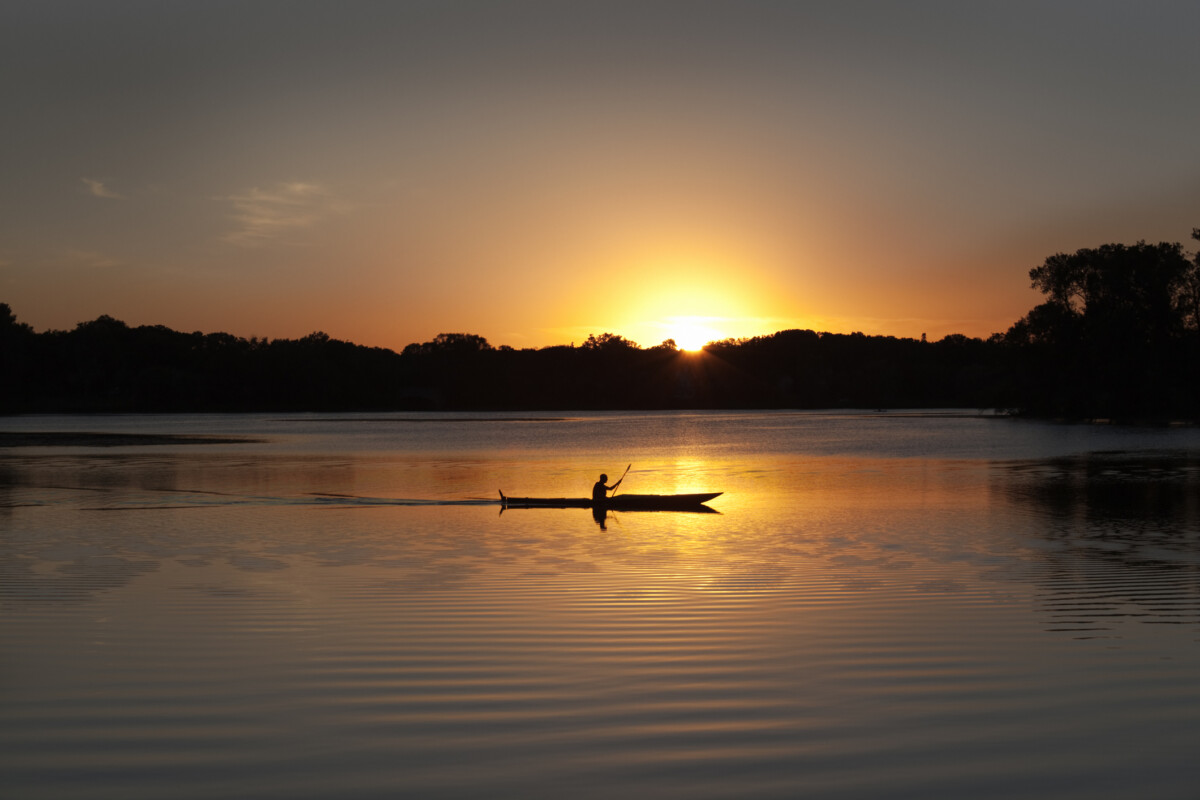
3. Four distinct seasons
One of the undeniable pros of living in Minnesota is the experience of its four distinct and equally enchanting seasons. Each season in the state brings unique charm and opportunities for outdoor and indoor activities. You can expect moderate temperatures through different seasons, with summers ranging from mid-80s°F in the south to upper 70s°F in the northern region. These distinct seasons ensure that life in Minnesota is never monotonous, as each change brings new experiences and a sense of anticipation for the beauty that the next season will bring.
4. Robust job market
Minnesota boasts a robust job market that is a crucial attraction for residents and newcomers alike. The state’s diverse economy is characterized by a healthy mix of industries, including technology, healthcare, manufacturing, finance, and agriculture. Minneapolis and St. Paul serve as economic powerhouses with a thriving corporate scene that includes Fortune 500 companies such as Target, UnitedHealth Group, and 3M.

5. Remarkable food scene
Minnesota’s food scene is a diverse and flavorful tapestry, encompassing regional classics like Tater Tot Hotdish and Scandinavian dishes while embracing international flavors from Mexican to Mediterranean. The state’s urban centers, particularly Minneapolis and St. Paul, showcase a thriving restaurant culture, and its farmers’ markets emphasize fresh, seasonal ingredients. With craft breweries, local distilleries, and renowned events like the Minnesota State Fair, the state’s food culture is a dynamic blend of tradition and innovation, offering a delectable journey for food enthusiasts. You’ll also find hidden gems in small towns in Minnesota like Mantorville, where you can find great burgers in a historic building.
Cons of living in Minnesota
1. Harsh winters
Minnesota’s harsh winters are a significant aspect of life in the state that some residents and newcomers may consider a drawback. Winters in Minnesota can be challenging, characterized by frigid temperatures, heavy snowfall, and icy conditions. With temperatures often dropping below freezing, the extreme cold can be physically demanding and necessitates significant preparation, including bundling up in layers and dealing with potential heating costs. The heavy snowfall can lead to commuting difficulties and snow removal efforts, while icy conditions increase the risk of accidents.

2. Mosquitos swarm in the summer
In the summertime, Minnesota’s lush and verdant landscapes come alive with a profusion of mosquitos, presenting a notable challenge for residents and visitors. While the state’s abundance of lakes, rivers, and wetlands creates picturesque outdoor settings, it also provides ideal breeding grounds for these pesky insects. Minnesota’s mosquitos are most active during the summer months, particularly in the evenings and near bodies of water. Insect repellent and protective clothing become essential accessories during this time.
3. Vulnerability to tornadoes and severe storms
The state falls within the region known as “Tornado Alley,” where tornadoes are relatively common, particularly during the spring and early summer. These violent storms can bring destructive winds, hail, and lightning, posing a risk to property and personal safety. Severe thunderstorms are also a frequent occurrence, often leading to flooding and power outages. While the state has well-established warning systems and safety protocols, living in an area prone to such natural disasters requires preparedness and vigilance.
4. High tax burden
Minnesota is known for its relatively high tax burden, which can impact residents and businesses alike. The state levies income taxes at progressive rates, with the top bracket being one of the highest in the nation, which can lead to a substantial portion of earnings going to state coffers. Additionally, the state’s sales tax is higher, encompassing a wide range of goods and services, including clothing. Property taxes can also be a financial burden, with the effective tax rate being 1.02% while the national average is 0.99%. Homeowners often face high rates, particularly in metropolitan areas.
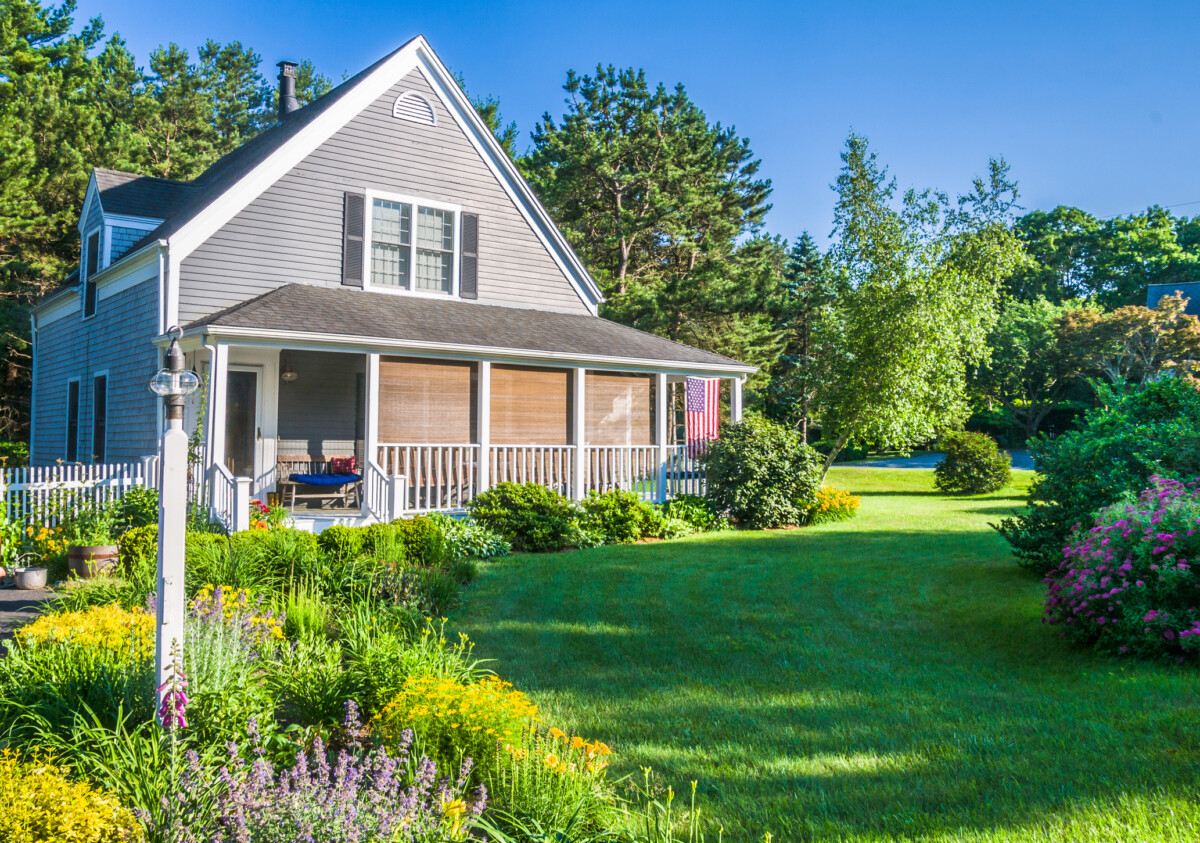
5. Terrible traffic in popular metros
Minnesota’s traffic congestion in certain areas, particularly in the Twin Cities of Minneapolis and St. Paul, can be a source of frustration for residents and commuters. The urban sprawl, coupled with a growing population, has led to significant traffic bottlenecks during rush hours. The outdated and overburdened road infrastructure, coupled with the challenges of winter weather, can result in lengthy and unpredictable commutes. The need for ongoing road construction and maintenance projects can further exacerbate congestion.
Pros and cons of living in Minnesota: Bottom line
The state’s stunning natural landscapes, four distinct seasons, robust job market, and diverse food scene make it an appealing place to call home. Ultimately, deciding to reside in Minnesota hinges on one’s preferences and priorities. Minnesota’s distinct character and culture provide a dynamic living environment that can be both rewarding and demanding, so you’ll want to weigh the pros and cons of living in Minnesota before deciding.
- SEO Powered Content & PR Distribution. Get Amplified Today.
- PlatoData.Network Vertical Generative Ai. Empower Yourself. Access Here.
- PlatoAiStream. Web3 Intelligence. Knowledge Amplified. Access Here.
- PlatoESG. Carbon, CleanTech, Energy, Environment, Solar, Waste Management. Access Here.
- PlatoHealth. Biotech and Clinical Trials Intelligence. Access Here.
- Source: https://www.redfin.com/blog/pros-and-cons-of-living-in-minnesota/
- :has
- :is
- :where
- $UP
- 000
- 1
- 10
- 300
- 500
- a
- About
- abundance
- accessories
- accidents
- active
- activities
- Additionally
- affordable
- agriculture
- alike
- alive
- also
- an
- and
- anticipation
- appeal
- appealing
- Applying
- approximately
- ARE
- AREA
- areas
- article
- AS
- aspect
- At
- attraction
- attractive
- average
- Bank
- BE
- beautiful
- Beauty
- become
- before
- being
- below
- Blend
- boasts
- bodies
- both
- bottlenecks
- Bottom
- Break
- bring
- Brings
- Bug
- Building
- burden
- businesses
- by
- call
- CAN
- canoe
- cape
- Centers
- certain
- challenge
- challenges
- challenging
- Chance
- change
- character
- characterized
- Cities
- City
- cityscape
- classics
- Clothing
- CoD
- cold
- come
- Common
- Communities
- commuters
- commuting
- Companies
- compelling
- conditions
- congestion
- Cons
- Consider
- construction
- contributes
- Corporate
- Cost
- Costs
- countless
- coupled
- craft
- creates
- crucial
- Culture
- curious
- dealing
- Deciding
- defined
- demanding
- dense
- different
- difficulties
- distinct
- diverse
- down
- Dropping
- during
- dynamic
- each
- Early
- Earnings
- Economic
- economy
- efforts
- embark
- embracing
- emphasize
- encompassing
- ensure
- enthusiasts
- Environment
- equally
- escape
- essential
- events
- exacerbate
- example
- expect
- experience
- Experiences
- explore
- external
- extreme
- Face
- fair
- Falls
- Features
- finance
- financial
- Find
- food
- For
- Fortune
- four
- Freezing
- frequent
- fresh
- friendly
- from
- frustration
- further
- Gardens
- get
- going
- goods
- great
- grounds
- Group
- Growing
- healthcare
- healthy
- Heart
- heavy
- here
- Hidden
- High
- higher
- highest
- hiking
- Hills
- hinges
- historic
- Home
- HOURS
- housing
- However
- HTTPS
- iconic
- ideal
- Impact
- in
- includes
- Including
- Income
- Increase
- Indoor
- industries
- Infrastructure
- ingredients
- Innovation
- interconnected
- internal
- International
- intricacies
- IT
- ITS
- Job
- journey
- jpg
- known
- lake
- lakes
- largest
- layers
- lead
- leading
- LEARN
- Led
- Life
- light
- lightning
- like
- List
- live
- living
- local
- located
- lower
- maintenance
- make
- manufacturing
- Market
- Markets
- max-width
- May..
- Mediterranean
- minnesota
- mix
- moderate
- months
- more
- most
- multifaceted
- myriad
- nation
- National
- Natural
- Nature
- Near
- necessitates
- Need
- neighboring
- never
- New
- newcomers
- next
- North
- notable
- occurrence
- of
- offering
- Offers
- often
- on
- ONE
- ongoing
- opportunities
- Opportunity
- Option
- or
- Other
- Outages
- Outdoor
- Paradise
- part
- particularly
- Paul
- person
- personal
- Physically
- Picturesque
- Place
- Places
- plato
- Plato Data Intelligence
- PlatoData
- Popular
- population
- potential
- power
- powerhouses
- preferences
- preparation
- presents
- progressive
- projects
- property
- PROS
- prospective
- Protective
- protocols
- provide
- provides
- providing
- range
- ranging
- Rates
- Read
- Redfin
- region
- regional
- relatively
- remarkable
- removal
- Renowned
- renters
- requires
- residents
- restaurant
- result
- rewarding
- Rich
- Risk
- road
- robust
- Rolling
- rush
- Safety
- sale
- sales
- same
- Scandinavian
- scene
- searching
- Season
- seasonal
- seasons
- seeking
- sense
- serve
- Services
- settings
- settle
- severe
- showcase
- significant
- significantly
- snow
- So
- some
- Source
- South
- spring
- st
- standout
- started
- State
- storms
- strong
- Stunning
- substantial
- such
- summer
- Sunset
- superior
- Swarm
- Systems
- tapestry
- Target
- tax
- Taxes
- Technology
- terrible
- than
- that
- The
- The State
- There.
- These
- this
- those
- thriving
- Through
- time
- to
- top
- towns
- tradition
- traffic
- trail
- true
- twin
- Ultimately
- undeniable
- unique
- unpredictable
- urban
- Vast
- vigilance
- visitors
- vulnerability
- want
- warning
- Water
- Waters
- we
- Weather
- weigh
- whether
- which
- while
- wide
- Wide range
- will
- winds
- Winter
- with
- within
- Wonderland
- you
- yourself
- zephyrnet

